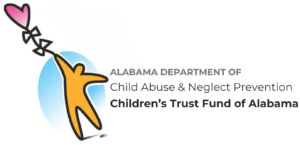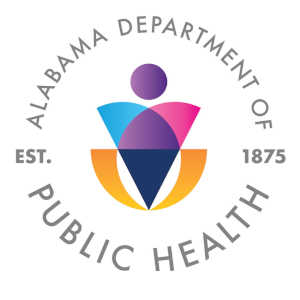Last year, the United States passed a grim milestone of more than 100,000 drug overdose deaths annually. The vast majority of these drug overdose deaths involved fentanyl, a synthetic opioid that is 50-100 times stronger than heroin and morphine.[1,2]
When you see a number as large as 100,000, it can be easy to think of it as just a number or another statistic, but it is important to remember that means 100,000 lives lost, and more than twice as many lives of friends, family, and loved ones who are devastated by the loss of a loved one. One of the most tragic parts about this many lives lost is that nearly every overdose death could have been prevented.
Fentanyl has been increasingly found in all corners of the black market drug supply. People who think they are buying heroin often end up with fentanyl, instead. People who think they are buying prescription opioids or benzodiazepines on the streets often end up with counterfeit pills that are laced with a deadly dose of fentanyl. According to the DEA, 42% of pills tested for fentanyl contained at least 2 mg of fentanyl, considered a potentially lethal dose.[3]
While some people who are addicted to opioids and have a high opioid tolerance seek out fentanyl on purpose, few people overdose intentionally. Others have no idea they are taking fentanyl until it is too late. As a result, it is safe to assume that many people who overdose on fentanyl aren’t even aware that they are taking fentanyl in the first place–but there are ways to prevent this from happening so people know whether or not their drugs have been laced with fentanyl.
One way to prevent accidental fentanyl overdoses is to use fentanyl test strips.
What are Fentanyl Test Strips and How Do They Work?
 Fentanyl test strips are a type of low-cost drug testing technology that was designed to be used in urinalysis drug screenings to test for the presence of fentanyl in a person’s urine. However, researchers and public health officials have discovered that they can also be used to detect the presence of fentanyl and fentanyl analogs in illicit drug samples before those drugs are ingested.[4]
Fentanyl test strips are a type of low-cost drug testing technology that was designed to be used in urinalysis drug screenings to test for the presence of fentanyl in a person’s urine. However, researchers and public health officials have discovered that they can also be used to detect the presence of fentanyl and fentanyl analogs in illicit drug samples before those drugs are ingested.[4]
Before using drugs, users can simply dissolve a small amount of their drugs in water and dip a test drip in the liquid. After 15 seconds, the strip can be removed and set on a flat surface for five minutes or until the results appear. One line indicates the presence of fentanyl or a fentanyl analog while two lines indicate no fentanyl detected.
While fentanyl test strips do not measure the potency of fentanyl or exactly how much fentanyl is in a drug sample, they do tell drug users when their drugs are laced with this powerful opioid. Having this awareness can encourage drug users to be safe when using drugs or avoid using the drug completely, ultimately preventing an overdose.
Alabama Passes Legislation Approving Fentanyl Test Strips
The main problem with using fentanyl test strips to prevent opioid overdose is accessibility. In some states, fentanyl test strips are actually illegal. While many states have taken steps to decriminalize them, many people don’t even know that they exist or how to use them to prevent an overdose.
In March 2022, Alabama took a progressive step forward by passing legislation approving the use of fentanyl test strips. According to Mark Wilson of the Jefferson County Department of Health, the Fentanyl Test Strip Bill is “a simple bill that basically exempts fentanyl test strips from the list of things that are illegal in our drug paraphernalia law.”[5] In other words, fentanyl test strips are no longer considered drug paraphernalia in Alabama, and people cannot be arrested or charged for having the test strips in their possession.
Practicing Harm Reduction Saves Lives
Opponents of the legalization of fentanyl test trips claim that they encourage illicit drug use, but there is no evidence to back  this claim. Instead, fentanyl test strips are one harm reduction technique that can make drug users aware of the presence of fentanyl in their drugs so they can regulate their drug use and avoid a fatal overdose. They do not deter people from using illicit drugs entirely, but they can save a person’s life long enough for them to realize that they need to seek professional help.
this claim. Instead, fentanyl test strips are one harm reduction technique that can make drug users aware of the presence of fentanyl in their drugs so they can regulate their drug use and avoid a fatal overdose. They do not deter people from using illicit drugs entirely, but they can save a person’s life long enough for them to realize that they need to seek professional help.
In addition to using test strips to detect fentanyl, drug users can also consider carrying Narcan (naloxone). Narcan is a nasal spray that can reverse the effects of an opioid overdose. It can be bought at any pharmacy without a prescription. By testing drugs for fentanyl, carrying naloxone, and never using opioids alone, drug users and their loved ones can prevent a swath of opioid overdose deaths.
References:
- https://www.cdc.gov/nchs/pressroom/nchs_press_releases/2021/20211117.htm
- https://www.cdc.gov/stopoverdose/fentanyl/index.html
- https://www.dea.gov/resources/facts-about-fentanyl
- https://www.cdph.ca.gov/Programs/CID/DOA/CDPH%20Document%20Library/Fact_Sheet_Fentanyl_Testing_Approved_ADA.pdf
- https://whnt.com/news/alabama-news/alabama-lawmakers-approve-bill-to-legalize-fentanyl-test-strips-to-help-prevent-overdoses/









